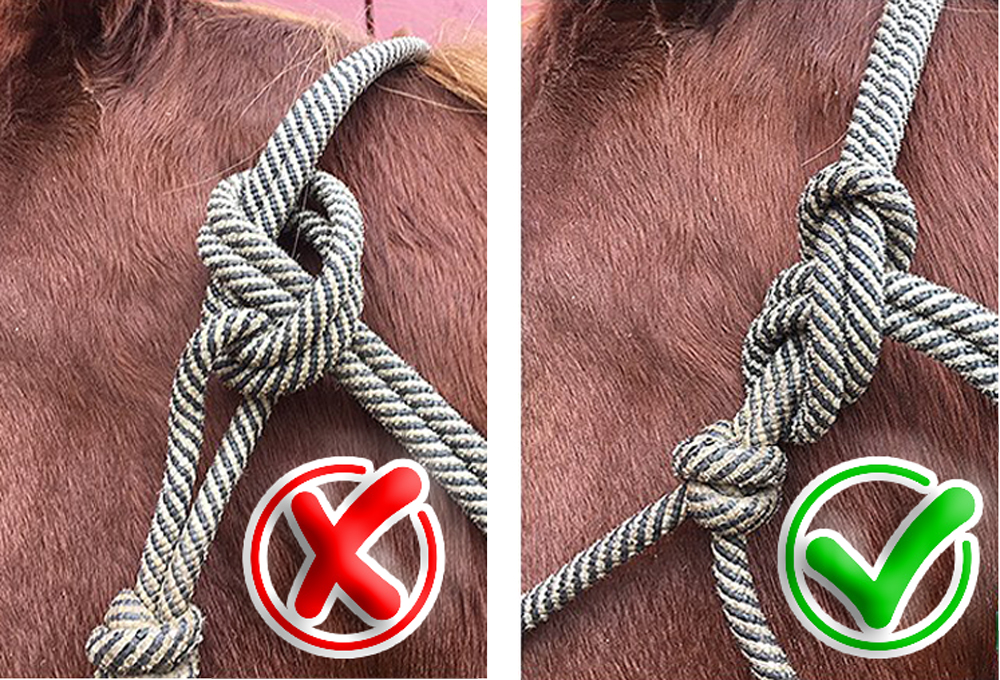Hur man använder en repgrimma korrekt
Posted On 2021-03-24
Det finns så många olika repgrimpar där ute, vissa har konstiga mål och många använder repgrimrar utan någon tanke på varför. Så här är fyra saker som kan vara bra att veta om repgrimrar:
- Ett stort antal repgrimmor har väldigt konstiga mått och sitter inte så bra på hästen!
Om du ska använda en repgrimma, se till att den är väl anpassad. Bäst när de ligger bakom hästens käkar och när nässtycket är i lämplig höjd (inte för långt ner på näsbryggan och inte för högt) och ger utrymme för hästen att tygga, gäspa etc. Har du en för stor repgrimma som hänger och kastar, konstiga mål, för liten el. det kan vara lika enkelt att använda en väl anpassad lädergrimma eller annan typ av grimma. - Många knytar repgrimman fel!
Då riskerar du att knuten går upp om den får mycket tryck på den, och det kommer garanterat att hända vid värsta möjliga tidpunkt. Eller att den stramar så bra att du inte får upp den igen.

- En repgrimma går inte av!
Tänk på detta när du överväger att binda din häst. Om något händer och hästen får panik kommer repgrimman inte att gå sönder. De kan vara bra att betrakta repgrimman som ett träningsverktyg, och som regel inte något som hästen ska bära oövervakad, när den är upbunden osv. (Mitt tipps: Gör det till en vana att bära en skarp fickkniv när du hanterar hästar. Det kan vara till nytta i nödsituationer). - Du behöver inte repgrimman hela tiden!
Varken att styra hästen, hantera eller arbeta den från marken. Du kan hantera hästen bra i en vanlig grime som passar bra. Men en väl anpassad repgrimma kan ofta vara ett mycket bra verktyg i osäkra situationer. Dessutom är det lätt för hästen att ha på sig utan tryck.

